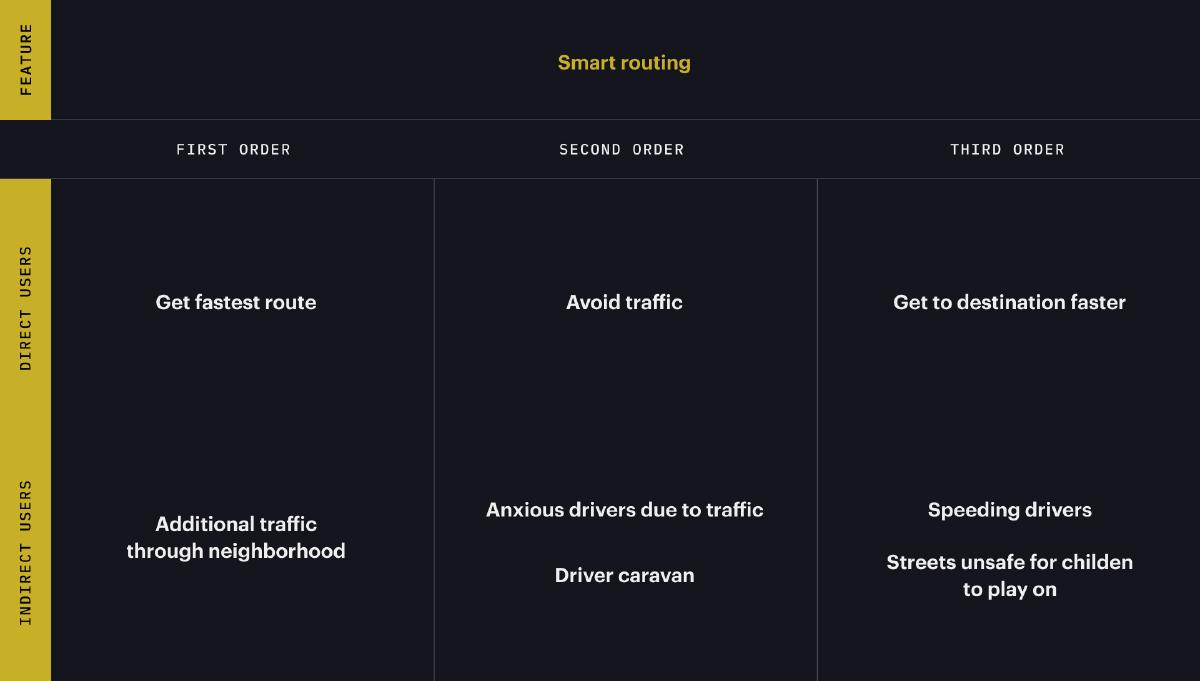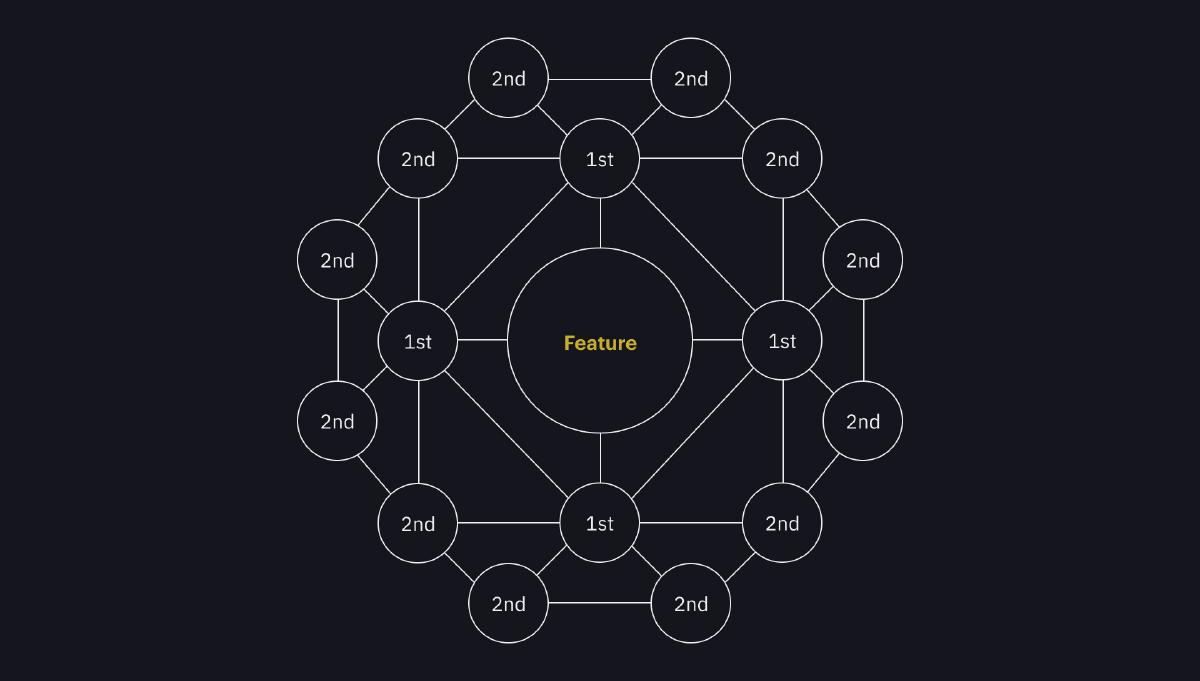It’s time we expand what it means to create more meaningful relationships between people and technology by considering the intentionality of the products we build.
Second-order thinking

An effective method for identifying unintentional impact is through second-order thinking. We can take into account how our design will affect indirect users by considering the consequences that will inform our design decisions. Suppose first-order thinking focuses on solving the immediate problem without considering the consequences. In that case, second-order thinking enables us to think through problems in the second, third, or nth order. We activate second-order thinking by asking ourselves “and then what” in a series.
Futures Wheel

A futures wheel is an exercise created by Jerome C Glenn that enables us to organize thinking and questioning about future development or trend. It’s a structured brainstorm that starts with a root term to evaluate and then events or consequences following directly from that development are positioned around it. Finally, the indirect consequences of the direct consequences are positioned around the first-level consequences. The purpose of this exercise is to understand the possible both direct and indirect impacts and to collect them in a structured format.
Project Pre-mortems
It’s pretty common to run an analysis of a project once the project is over, most often to identify the source of friction or failure that occurred during the project. These sessions, referred to as postmortems or retrospectives, are helpful for teams that wish to improve process and collaboration moving forward but do nothing to identify project risks or consequences at the beginning.
Related Articles
Design with Intentionality
It’s time we expand what it means to create more meaningful relationships between people and technology by considering the intentionality of the products we build.

